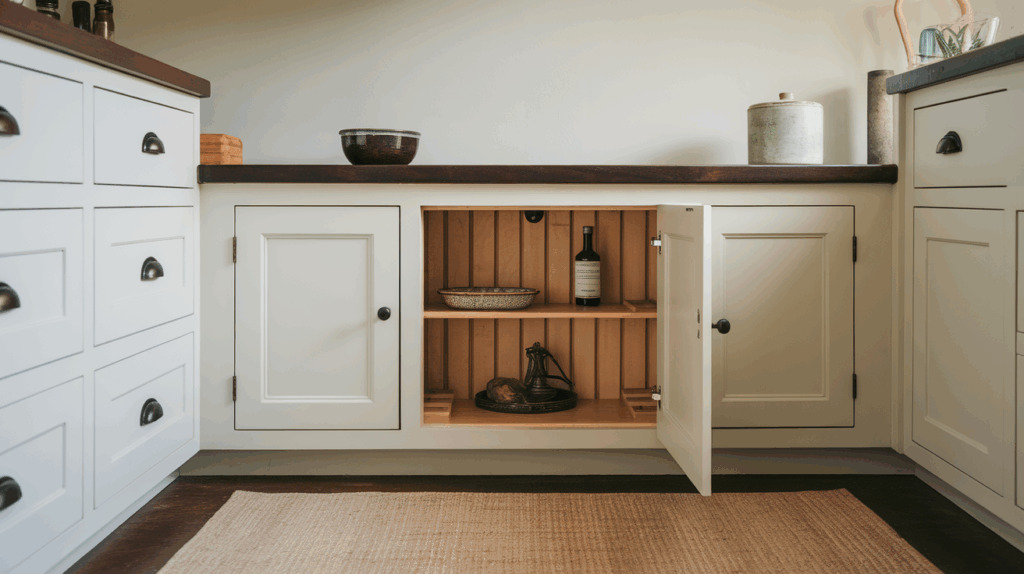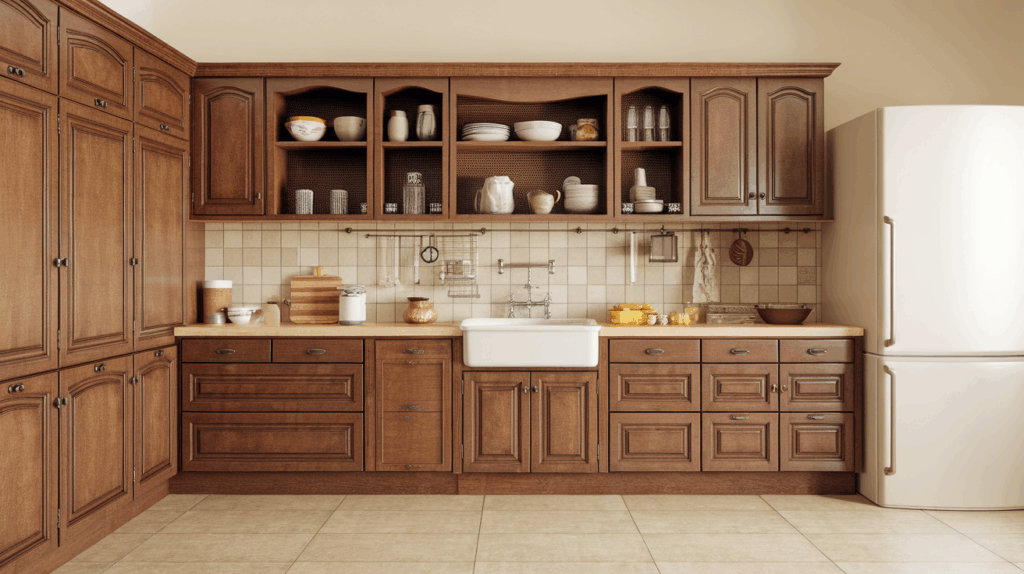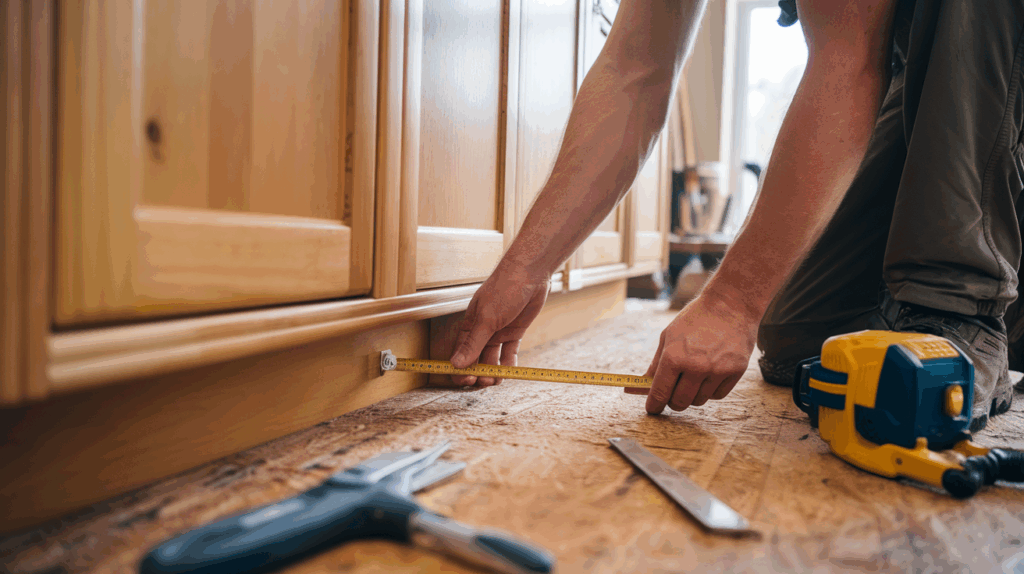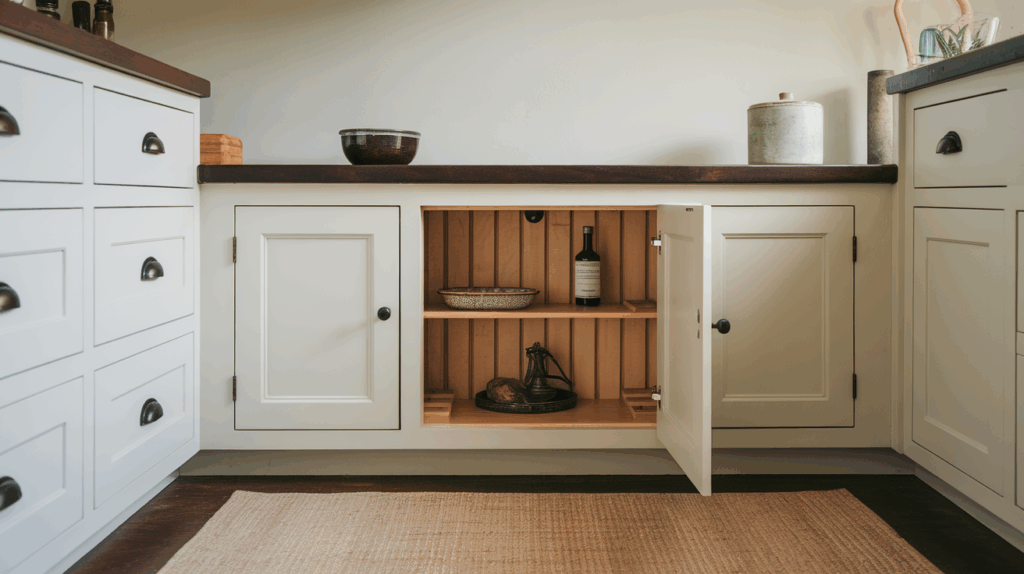When I first started working on kitchen designs, I didn’t think much about toe kicks. But as I spent more time in the field, I realized how crucial they are.
Toe kicks are the spaces at the bottom of cabinets that allow us to stand comfortably without bumping into them.
If you’ve been wondering about the right height for your toe kicks, you’re not alone.
It can make a big difference in your comfort and how functional your kitchen or bathroom feels.
In this article, I’ll walk you through what toe kicks are, why their height matters, and how to get the dimensions just right.
By the end, you’ll be able to make a well-informed decision for your cabinets and enhance your space’s overall design.
What Is a Toe Kick?

A toe kick is that recessed area at the bottom of your cabinetry. You may not think about it much, but it plays a huge role in comfort and usability.
It’s the space that allows you to stand close to the counter without your toes hitting the cabinet, giving you better posture and more space when you’re working in the kitchen.
Without toe kicks, standing at your counter could feel awkward or uncomfortable, as you’d constantly bump into the bottom of your cabinets.
The toe kick provides enough clearance for your feet to slide under the cabinet, which makes working at your counter or sink more comfortable.
It’s a simple feature, but one that improves the overall functionality of your space.
Why Is Toe Kick Height Important?
A toe kick might seem like a small detail in your kitchen or bathroom design, but its height plays a significant role in both comfort and functionality.
If it’s not right for your body, it can impact your ability to stand comfortably and work efficiently. Here’s why getting the right height is so important:
- Comfort for Different Heights: A toe kick that’s too high or too low can make standing at the counter uncomfortable, especially over long periods.
- Promotes Good Posture: The right height helps reduce strain on your back and legs, keeping you comfortable while cooking or working.
- Allows for Better Access: With a well-sized toe kick, you can get closer to your cabinets, making it easier to reach items.
- Improves Workflow: A properly positioned toe kick contributes to a functional, ergonomic layout in your space.
Ideal Toe Kick Height

The standard toe kick height is usually between 3 and 4 inches, and that’s because it’s the most comfortable range for most people.
This height allows for enough foot clearance, making it easy to stand close to the counter without any discomfort. It also works well with most cabinet layouts, which is why it’s the go-to measurement.
However, there are exceptions. If you’re taller, you may prefer a taller toe kick, such as 4.5 inches or even 5 inches, to maintain comfort. The extra height provides more space under the cabinets for your feet.
On the flip side, if you’re shorter, you may want to consider a lower height to ensure it’s easier to stand and reach comfortably.
Another factor to consider is the specific task you’re doing in the kitchen or bathroom.
For example, if you do a lot of prep work at the counter, you may want a slightly higher toe kick to help you maintain a more natural posture.
In custom cabinetry, especially in modern designs, you might find variations in toe kick height.
Some people prefer deeper toe kicks (around 6 inches), especially in high-end kitchens, for visual appeal or to give the space a more open, sleek look.
Toe Kick Dimensions: Standard vs. Custom
When selecting a toe kick for your space, it’s important to understand the differences between standard and custom dimensions.
| Feature | Standard Toe Kick | Custom Toe Kick |
|---|---|---|
| Height | 3.5 inches (typical) | 4.5–6 inches (can vary) |
| Depth | 3 inches | 3.5–6 inches (for design or function) |
| Design | Basic, functional | Can be deeper or more intricate |
| Best For | Standard kitchens and bathrooms | Custom kitchens, high-end designs |
| Cost | More affordable | More expensive due to customization |
How to Measure Toe Kick Height

Measuring toe kick height is straightforward but important to get right, especially when dealing with custom cabinetry.
This is how you do it:
- Find the Floor Level: Start by measuring from the floor to the bottom of the cabinet.
- Measure the Height: Use a tape measure to check the height of the toe kick from the floor to the bottom edge of the cabinet.
- Check Your Comfort Level: Stand at the counter and make sure there’s enough clearance for your feet without you feeling cramped or like you’re bending over.
If you’re working with custom cabinets or need to adjust for a specific height, you may want to make small tweaks.
For example, if you’re tall, you may choose a 4.5-inch height instead of the standard 3-inch toe kick for comfort.
Material and Finish Options for Toe Kicks
Toe kicks come in different materials, and your choice will depend on both function and style. These are some common materials:
- Wood: A classic and versatile option that can match the cabinetry.
- Laminate: Durable and affordable, but may not always match wood finishes perfectly.
- Metal: Often used for modern or industrial designs.
- Custom Finishes: You can choose finishes that complement your kitchen style, such as brushed nickel or matte black for a modern look.
Your material choice may impact the height slightly, especially with decorative toe kicks.
For example, a toe kick with a custom finish might require a little extra space for the finish to sit properly, so keep this in mind when planning.
Other Considerations When Designing Toe Kicks
There are a few other things to think about when designing your toe kick:
- Cleaning Ease: Some toe kick materials are easier to clean than others, which can be a factor in high-traffic kitchens.
- Foot Space: If you spend a lot of time standing at your counters, make sure your toe kick provides enough space for comfort.
- Toe Kick Drawers: Modern designs sometimes include extra storage in the toe kick, like small drawers or pull-out shelves. These can be handy for storing cleaning supplies or other small items.
How to Adjust Toe Kick Height
If you’re installing or renovating cabinets, it’s easy to adjust the toe kick height.
You can change the height during installation by trimming or adding spacers beneath the cabinet.
If you’re updating existing cabinets, you might need to remove the base and reinstall it at a different height.
By adjusting the height to suit your needs, you can ensure your kitchen or bathroom remains as functional and comfortable as possible.
Conclusion
Getting the right toe kick height is crucial for your kitchen’s comfort and functionality.
If you go with the standard 3- to 4-inch height or decide on a custom option, it’s important to consider your personal needs and how the space will be used.
With the tips and guidelines in this article, you can confidently make the right choice for your cabinetry.
Now that you know all about toe kick height, you’ll be able to make decisions that improve both the look and feel of your space.

